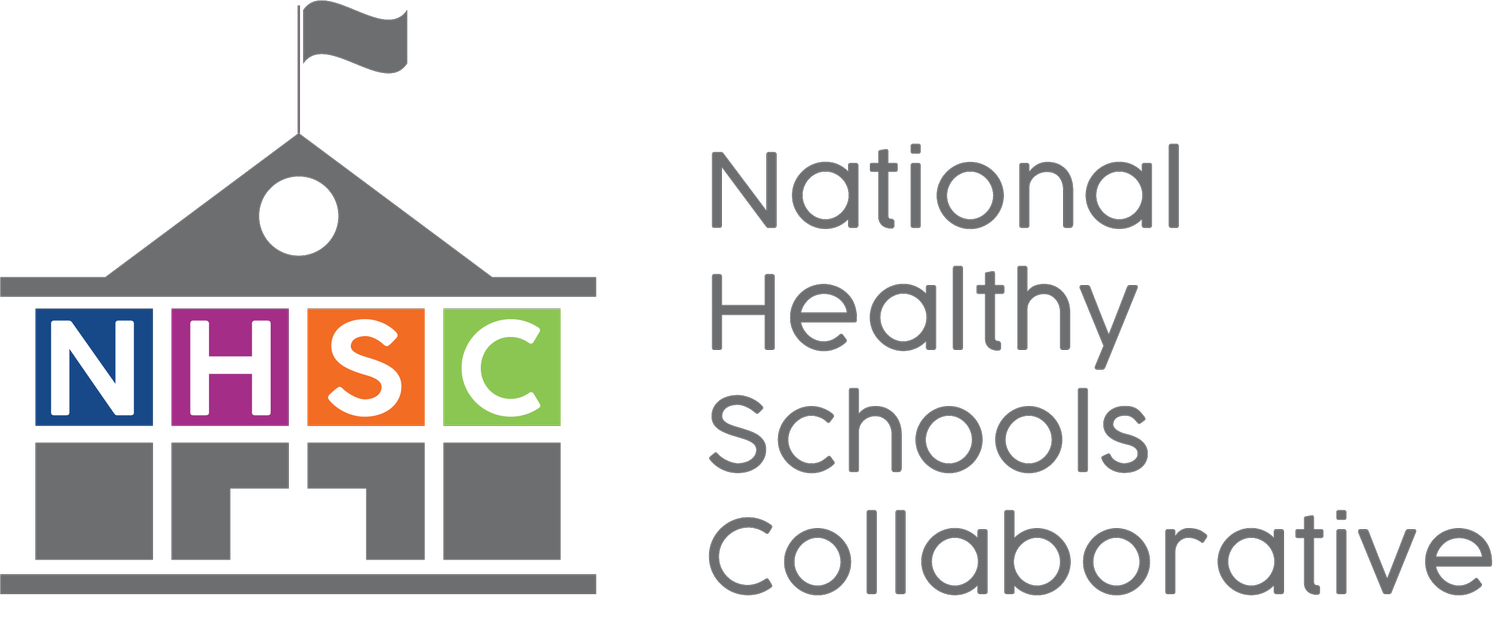
Federal
Priorities, Opportunities, and Case Studies
-
Opportunities
Create a new, principal office in the U.S. Department of Education (e.g., an Assistant Secretary of Healthy Schools). Functionally, this position would be responsible for coordinating technical assistance, policy, and funding across federal agencies and offices, including Health and Human Services, and its relevant divisions, Department of Agriculture, Environmental Protection Agency, Food and Drug Agency, and Housing and Urban Development. Coordination would include occupational health and safety work done by the Centers for Disease Control and Prevention (National Institute for Occupational Safety and Health, “NIOSH”), Department of Labor (Occupational Safety and Health Administration, “OSHA”), and National Institutes of Health (National Institute of Environmental Health Sciences, “NIEHS”). This position would manage Title IV, including Parts A, B, and F, and the full-service community schools funding.
Issue guidance, led by the Internal Revenue Service, that promotes the consideration of schools and education as part of the community health needs assessment process and highlights school health services and programming as an eligible use of community benefit resources.
Expand formula grant funding specific to supporting healthy schools, currently funded under the Student Support and Academic Enrichment Grants program (Title IV, Part A) of the Every Student Succeeds Act.
-
Opportunities
Increase the federal government’s share of Medicaid match for school-based services to at least 90 percent.
Fully fund the federal share of the Individuals with Disabilities Act.
Fully fund school meals (i.e. universal free meals).
Target funding to expand the number of school-based health centers for schools serving high percentages of economically disadvantaged students and increase funding for full-service community schools.
Case Study
In Georgia, Atlanta Public Schools (APS) is using a mix of funds provided through the Atlanta Public Schools general fund and federal pandemic relief bills to expand their comprehensive health services offerings through their public schools. Over the last two years, the APS Health Services Program has grown from a staff of one to ten and includes a full time epidemiologist, registered nurses, school health coordinator, and COVID-19 case investigators. By working with school nurses at the individual schools, the program is able to deliver a coordinated, team approach that addresses a number of individual and public health issues that can affect learning. Although much of the immediate focus was on pandemic related issues, the health services offerings have expanded to address a wide range of student health needs.
-
Opportunities
Provide guidance for states and districts to prioritize the continuity of service in partnership with health organizations within Title I and other categorical federal funding streams.
Streamline paperwork requirements to align administrative and direct services billing, and encourage districts to bill Medicaid for key administrative activities such as care coordination, transportation to healthcare providers, and enrollment in Medicaid.
-
Opportunities
Fund school construction, renovation, and clean transportation needs to ensure schools are safe and healthy.
Ensure schools have the updated infrastructure and equipment needed to provide physical activity and nutritious meals to students.
Provide states with technical assistance and guidance on conducting an audit of deferred maintenance needs and cost estimates within school districts.
Earmark new infrastructure funds to provide ongoing professional development for school facility professionals to ensure they are prepared to maintain relevant 21st century systems and can train other school employees in relevant safety and health topics.
Fund the Safe Routes to Schools program to provide safe transportation pathways to and from school.
Provide detailed technical guidance for how to optimize energy-efficient heating and air conditioning systems, energy-efficient lighting and occupancy sensors, daylighting strategies, water safety fixtures, and lower operations and maintenance expenses.
Support broadband expansion efforts to ensure student access to online learning materials from home and outside the school classroom.
-
Opportunities
Develop comprehensive, cross-agency guidance on how existing federal funding streams can be utilized to support healthy schools with a focus on the whole child (especially Titles I, II, and IV of the Elementary and Secondary Education Act and Individuals with Disabilities Act).
Eliminate structural inefficiencies in the Medicaid Program that disadvantage small and rural districts.
Encourage more Federally Qualified Health Centers to physically expand into and provide remote services to schools under section 330 of the Public Health Service Act.
Case Study
Michigan submitted a state plan amendment (SPA) in response to a 2014 Centers for Medicare and Medicaid Services (CMS) letter reversing the longstanding “free care rule” that had limited Medicaid reimbursement for services only included in a Medicaid-enrolled student’s Individualized Education Program. The SPA submitted was approved by CMS in 2019 which allowed Michigan to seek reimbursement for services to all Medicaid-enrolled students, not only those with IEPs and further expanded the range of providers who could bill for services provided. The program, known as Caring for Students (C4S) has successfully expanded access to a range of behavioral health and nursing services that were previously inaccessible to a large number of students.
-
Opportunities
Create a national public awareness campaign focused on the bidirectional influence of health and learning outcomes.
-
Opportunities
Build a healthy schools database utilizing existing data from the CDC, as well as data collected by other federal agencies (e.g., student poverty data collected by USDA, OSHA; state OSH agency data on workplace injuries; and CDC Youth Risk Behavior Surveillance System data) that can be shared, viewed, and studied by researchers, policymakers, and advocates.
Conduct a decennial national census of school-based health services.
Modernize the Family Educational Rights and Privacy Act to enable seamless coordination across education and health and to improve data privacy and security by updating governance, enforcement, conditions of data sharing, data security, and research provisions.
Modernize the Health Insurance Portability and Accountability Act to enable easier coordination across education and health while still ensuring data privacy and security by updating governance, enforcement, conditions of data sharing, and data security for education and health systems.
-
Opportunities
Establish a task force in the U.S. Department of Education designed to issue guidance to improve the interoperability of licensure across states to ensure adequate mobility of staff and reciprocity agreements that allow healthy schools professionals to quickly transition from one district/state to another.
Assist educators with accessing federal student loan forgiveness programs.
Utilize existing data shared with the U.S. Department of Education and U.S. Department of Labor to issue a report on the status of healthy schools personnel and barriers to retention.
Encourage states to review and comment on federal reports on licensure for educators and examine licensure and reciprocity agreements with nearby states.
Create discretionary pre-service and career change educator training grant programs to address educator shortages.
Require states to report on recruitment and retention strategies and progress at consistent intervals.
-
Opportunities
Release guidance on evidence-based best practices for meaningfully engaging families of different backgrounds and circumstances in school activities that address healthy school goals and priorities.
Fully fund family engagement efforts, with Title 1 funding and expand Title II and IV to include earmarked family engagement funding.
-
Opportunities
Elevate and amplify district-community-based models and practices for improving healthy schools via webinars and evidence-based best practice technical assistance, led by the Assistant Secretary of Healthy Schools.
Create a Healthy Schools Award (similar to green schools and blue ribbon) that would recognize districts across the country that have formed community-based partnerships that are leading to positive health and learning outcomes, including those working on school health, children’s health, and occupational safety and health
Identify opportunities for, and promote the establishment of community schools using federal funds for these purposes.

